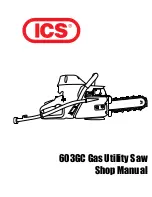
English
8
NOTE:
To provide greater crosscut capacity with reduced stroke, the blade on the DWS709
extends deeper into the table. As a result, a greater lifting force on the workpiece may be
experienced during the cut.
WARNING:
Always use a work clamp to maintain control and reduce the risk of workpiece
damage and personal injury, if your hands are required to be within 6" (152 mm) of the blade
during the cut.
NOTE:
The rail lock knob shown in Figure 4 must be loose to allow the saw to slide along
its rails.
Miter crosscuts are made with the miter arm at some angle other than zero. This angle is often
45º for making corners, but can be set anywhere from zero to 50º left or 60° right. Make the
cut as described above.
When performing a miter cut on workpieces wider than a 2 x 6 that are shorter in length,
always place the longer side against the fence (Fig. 7).
To cut through an existing pencil line on a piece of wood, match the angle as close as
possible. Cut the wood a little too long and measure from the pencil line to the cut edge to
determine which direction to adjust the miter angle and recut. This will take some practice,
but it is a commonly used technique.
BEVEL CUTS
A bevel cut is a crosscut made with the saw blade leaning at an angle to the wood. In order to
set the bevel, loosen the bevel lock (Fig. 4), and move the saw to the left or right as desired.
(It is necessary to move the fence to allow clearance.) Once the desired bevel angle has been
set, tighten the bevel lock firmly. Refer to the
Features and Controls
section for detailed
instructions on the bevel system.
Bevel angles can be set from 49º right to 49º left and can be cut with the miter arm set
between 50º left or 60º right. At some extreme angles, the right or left side fence might have
to be removed. To remove the left or right fence, unscrew the fence adjustment knob several
turns and slide the fence out.
NOTE:
Refer to
Fence Adjustment
in the
Adjustments
section for important information on
adjusting the fences for certain bevel cuts.
QUALITY OF CUT
The smoothness of any cut depends on a number of variables. Things like material being cut,
blade type, blade sharpness and rate of cut all contribute to the quality of the cut.
When smoothest cuts are desired for molding and other precision work, a sharp (60 tooth
carbide tip or greater) blade and a slower, even cutting rate will produce the desired results.
Ensure that the material does not move or creep while cutting; clamp it securely in place.
Always let the blade come to a full stop before raising arm.
If small fibers of wood still split out at the rear of the workpiece, stick a piece of masking tape
on the wood where the cut will be made. Saw through the tape and carefully remove tape
when finished.
For varied cutting applications, refer to the list of recommended saw blades for your saw and
select the one that best fits your needs. Refer to
Saw Blades
under
Optional Accessories
.
BODY AND HAND POSITION (FIG. 8A–8D)
Proper positioning of your body and hands when operating the miter saw will make cutting
easier, more accurate and safer. Never place hands near cutting area. Place hands no closer
than 6" (152 mm) from the blade. Hold the workpiece tightly to the table and the fence
when cutting. Keep hands in position until the trigger has been released and the blade has
completely stopped. ALWAYS MAKE DRY RUNS (UNPOWERED) BEFORE FINISH CUTS SO
THAT YOU CAN CHECK THE PATH OF THE BLADE. DO NOT CROSS HANDS, AS SHOWN
IN FIGURE 8C.
Keep both feet firmly on the floor and maintain proper balance. As you move the miter arm
left and right, follow it and stand slightly to the side of the saw blade. Sight through the guard
louvers when following a pencil line.
FIG. 6
BEVEL POINTER
(one each side)
0° BEVEL ADJUSTMENT
SCREW
BEVEL POINTER SCREW
(one each side)
BEVEL SCALE
FIG. 7
the wood firmly on the table and against the fence. With the rail lock knob tightened, turn on
the saw by squeezing the trigger switch shown in Figure 4.
When the saw comes up to speed (about 1 second) lower the arm smoothly and slowly to cut
through the wood. Let the blade come to a full stop before raising arm.
When cutting anything larger than a 2 x 8 (51 x 203 mm [2 x 6 (51 x 152) at 45º miter]) use an
out-down-back motion with the rail lock knob loosened. Pull the saw out, toward you, lower
the saw head down toward the workpiece, and slowly push the saw back to complete the
cut. Do not allow the saw to contact the top of the workpiece while pulling out. The saw may
run toward you, possibly causing personal injury or damage to the workpiece.
Cutting of multiple pieces is not recommended but can be done safely by ensuring that each
piece is held firmly against the table and fence.
Содержание DWS709
Страница 2: ......











































